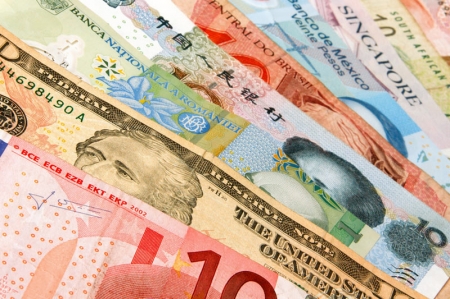U.S. Consumer Spending Buffeted by Fastest Inflation in Decades
U.S. Consumer Spending Buffeted by Fastest Inflation in Decades (Bloomberg) — U.S. consumers took a breather in November a month after a holiday spending surge, but that pause risks becoming more lasting if Americans pull back when faced with both the fastest inflation in decades and the omicron variant.
Purchases of goods and services, after adjusting for higher prices, were little changed following a solid 0.7% gain in October. The government’s figures were the marquee of a pre-holiday burst of economic reports Thursday that showed stronger orders for durable goods, increased new-home sales and firmer consumer sentiment.
Underlying the spending figures are a series of crosscurrents. Buffeted by headlines about snarled supply chains, many Americans started their holiday shopping earlier than usual this year, helping to explain the strong advance in the prior month.
But consumers are also facing the fastest inflation in decades. With every trip to the grocery store and gas pump eating away a little more of their paychecks, people have less left over for discretionary purchases. And the new omicron variant of Covid-19 threatens to curb the incipient rebound in outlays for services.
The report showed Americans are spending more on essentials amid the pickup in prices. Money spent on housing and utilities increased last month, as did outlays on gasoline and food. The data showed inflation-adjusted spending on services rose 0.5%, the most in three months, while goods outlays dropped 0.8%, the first decline since July.
The personal consumption expenditures price gauge, which the Federal Reserve uses for its 2% inflation target, increased 0.6% from a month earlier and 5.7% from November 2020, the highest reading since 1982.
The data come on the heels of a hawkish pivot by Fed officials, who have been under pressure to take action against overheating prices. Last week the central bank announced it would accelerate the end of its asset-buying program, and new interest-rate projections indicated policy makers favor raising borrowing costs by three-quarters of a percentage point next year.
Consumers are saving less amid the rapid price increases. Adjusted for inflation, disposable personal income, or after-tax income, fell 0.2%, the fourth straight decline. The savings rate — personal saving as a share of disposable income — declined to 6.9%, the lowest since December 2017.
What Bloomberg Economists Say…
“A flat reading on real consumer spending in November — even before omicron hit — suggests inflation may be starting to weigh on consumer resilience into year-end… The increase in services was widespread, a positive sign of rotation out of goods spending going into next year.”
— Yelena Shulyatyeva and Anna Wong, economists
Though federal stimulus has waned, a host of companies have hiked pay this year to attract and retain talent amid widespread hiring struggles. In November, wages and salaries rose 0.5%, following a 0.8% gain in October, the report showed.
The core price index, which excludes food and energy, rose 0.5% from the prior month and 4.7% from a year earlier, the fastest gain since 1983.
Ian Shepherdson, chief economist at Pantheon Macroeconomics, said he’s scaling back his forecast for the gain in fourth-quarter consumer spending on the grounds that “the omicron Covid wave appears to be hitting spending at restaurants.” The firm now sees outlays rising at a 5.5% annualized rate in the period, down from the prior 6% forecast, according to a note Thursday.
Meanwhile, the outlook for both manufacturing and residential construction appears solid after a pair of Thursday reports showed stronger bookings for durable goods and the firmest pace of new-home sales in seven months.
Orders for goods meant to last several years increased 2.5% from the prior months, spurred by more bookings for commercial aircraft, motor vehicles, metals and communications equipment. While core capital goods orders softened, the figures follow steady increases in prior months that illustrate a robust pattern of business investment.
Housing demand is also flexing some muscle and keeping builder backlogs elevated. Purchases of new single-family homes increased 12.4% to a 744,000 annualized pace, although the prior was revised down sharply.
Of the homes sold in last month, construction on 221,000 had yet to be started, the most since May, suggesting backlogs are growing.
Separate data from the University of Michigan showed consumer sentiment picked up this month as households grew more upbeat about the economy and outlook for their finances.
And the Labor Department said new applications for state jobless benefits totaled 205,000 in the week ended Dec. 18, unchanged from the prior period and underscoring a subdued level of job losses.
©2021 Bloomberg L.P.












 Bitcoin
Bitcoin  Ethereum
Ethereum  Tether
Tether  XRP
XRP  Solana
Solana  Dogecoin
Dogecoin  USDC
USDC  Lido Staked Ether
Lido Staked Ether  Cardano
Cardano